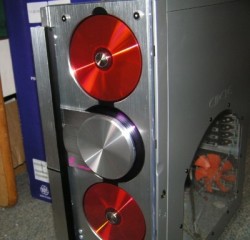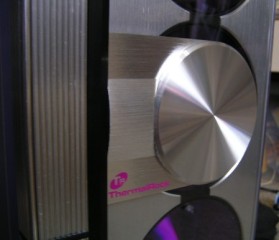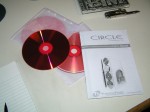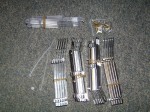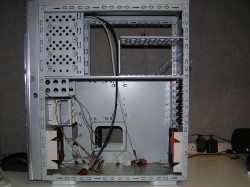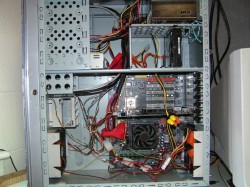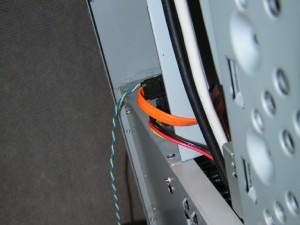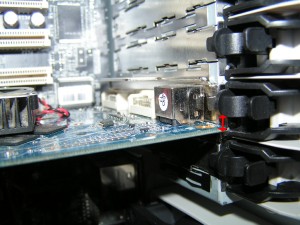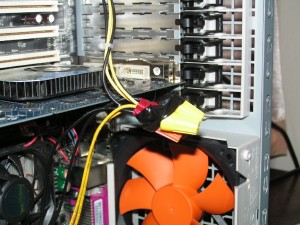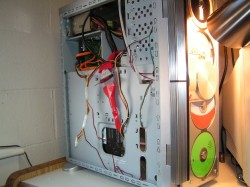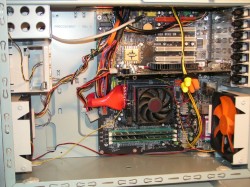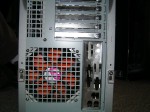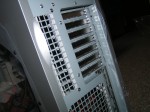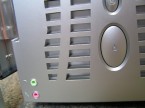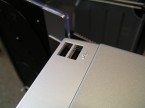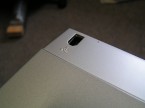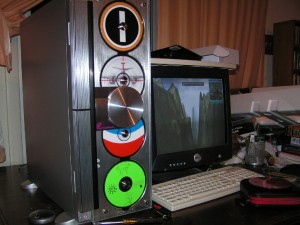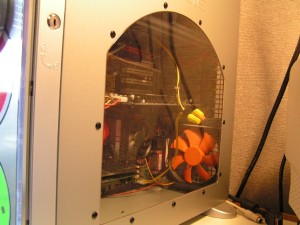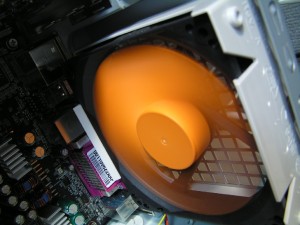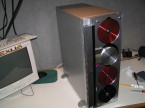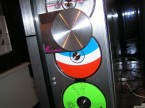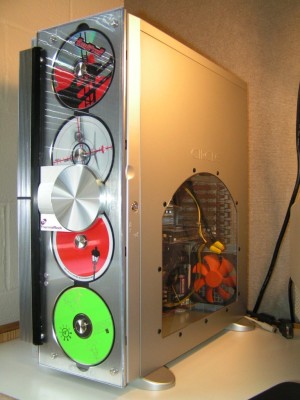Take a look at the review of this really interesting and unique case from Thermalrock, a division of Thermaltake. The looks will definitely catch your attention!
INTRODUCTION
There are some pieces of hardware about which I generally could not care less. While I think power supplies are probably the least interesting (though important) part of a computer, then cases have generally been a close second. I would probably, therefore, be the last person you would entrust to write a review for a case, unless you had confidence that there was enough potential in the hardware to transform me, like Scrooge on Christmas Eve, with his three ghosts. I would like to say that the ThermalRock manufactured Circle chassis succeeded in this respect, but there were a few rough patches that managed to make it less than a complete success.
FEATURES and SPECIFICATIONS
Features
I must admit that when I found a gigantic box waiting for me in the mailroom, I was fairly excited to take it home, open it up, and see just what it had to offer me. My first impression of it was not how stylish or functional it appeared, but rather how enormous and heavy the box was. The box contained simply the empty case, without even a power supply, and yet it was significantly heavier than my other case, fully loaded with drives and devices. This can be either a strong or weak point of this case, depending on what use you plan on putting it through, as will be discussed later.
So, what stands out on this case?
And, of course, the expected bits:
| Model: | RH-F030-2SW |
| Motherboards: | 12″ x 9.6″ (ATX), 9.6″ x 9.6″ (Micro ATX), 12″ x 13″ (Extend ATX) |
| Expansion Slots: | 7 Slots |
| Case Type: | Full Tower |
| Cooling System: | Front – 120x120x25 mm fan 2000rpm (intake) Rear – 120x120x25 mm fan 2000rpm (exhaust) |
| Thermal Test: | Tambient: 38°C Intel thermal requirement validated |
| Side Panel: | Arch Shape Window |
| Color: | Silver Coating |
| I/O Ports: | USB2.0 x 2, IEEE1394 x 1, Micro phone & Ear phone ports |
| Dimension (H*W*D): | 205.0 mm ( W ) x 500.0 mm ( D ) x 540.0 mm ( H ) |
| Material: | SECC 0.8mm (Chassis) Aluminum (Front Panel) |
| Carton Dimension (D x W x H): | 630 x 295 x 590 mm ( 219 pcs / 20′ ; 441 pcs / 40′; 570 pcs / 40HQ ) |
| Included: | Four opaque plastic drive rails for 3.5″ front bays. Ten steel drive rails for 5.25′ front bays. Four red and four purple CD-R disks for the front panel. Twelve steel drive rails for hard drives. One bag of mixed screws and standoffs for the motherboard. One user manual. |
|
$$ FIND THE BEST PRICES FOR THE ThermalRock Circle Case @ PRICEGRABBER $$ |
INSTALLATION
Let’s get down to the installation. Now, I am most certainly not a seasoned vet when it comes to installing motherboards, but for the most part, I had no troubles with getting most of my stuff attached, connected, and wired. Of course, this is barring the issues I had with the power supply, but that will be discussed later.
I was at first a little puzzled about how I was to attach the tool-less rails to my drives prior to installation, because the instruction manual simply stated to “Attach the included Tool-Les Guide Rail on the side of device, then insert it into the bay.” After some fumbling around with the parts, I eventually realized that you had to line them up so that two prongs would stick into the screw holes while a small clip would snap around the bottom of the drive. Maybe this is really obvious for some people, but it took a little bit of tinkering for me to get it right.
After attaching the rails, however, installing the drive was simple, as it was just a matter of pushing it into place. I did have a little trouble with my CD drive, however, in that it required quite a bit of force to push it in the last centimeter, but I think I may have just managed to misalign it at some point. Other drives encountered no resistance, at least in terms of rail attachments.
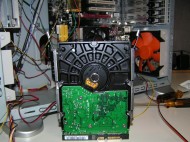 The hard drive, with rails finally attached. |
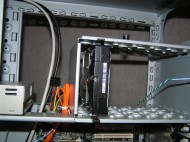 No problems installing the HDD in any of the slots. |
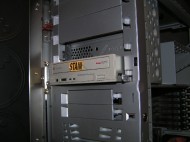 The CD drive not going in quite as easily. |
I say this because I noticed a potential problem with installing my hard drive. The way the case is designed, you have to install drives under the power supply, with their backs right up against the left side of the case. This means that to attach their respective power and data cables, you have to bend the cables quite a bit to actually plug them in. My SATA connectors barely made the turn, and I shudder to imagine having to do it with clunky IDE cables. This isn’t an issue of convenience, since plugging them in is simple with the left panel removed, but you must apply pressure to the bends in the cables just to put the panel back on afterwards. This got me worried about the data cable, but luckily it wasn’t an extreme enough angle to cause problems.
On the topic of tool-less attachments, let’s move onto the video card installation. Indeed, with the plastic flips, it was incredibly easy to install. However, after securing the latch down on the card, I noticed that it was not held down as tightly as a simple, old-fashioned screw would’ve held it. There actually was about a centimeter of wiggle room vertically for the card. There appeared to be a placement for a redundant screw to override the tool-less operation, but I could not for the life of my get a screwdriver to operate at the angle required, without actually breaking the tool-less latches, so I decided that I would just live with the wiggle.
|
$$ FIND THE BEST PRICES FOR THE ThermalRock Circle Case @ PRICEGRABBER $$ |
INSTALLATION, Continued
Now, back to the power supply issue. One interesting feature of this case is the 180 degree rotation of the motherboard, to allow for more efficient airflow over the CPU, provided by the twin 12cm fans mounted on the front and back. This proved to be my bane, and the source of much frustration, as the power supply I tried to use most certainly was not designed for such a scheme. The manufacturers of my PSU must have been trying to skimp everywhere they could, because the power cable lengths were just long enough to work with my old case, and as such were entirely insufficient for the Circle case. The 4-pin connector was laughably short, and no amount of wishing or will-power was going to make it reach. I considered splicing the wires with some other ones to get a little more length, but since the 20-pin connector also came up short, I realized that I did not want to even try to open that can of worms. I talked with a friend, who had an extra power supply that was more suited for this type of case, so I decided that rather than running around buying extenders, I would just use that, and in the interim, I just left the PSU on my desk, which conveniently was just the right length for everything to plug in nicely. It definitely did not achieve optimal airflow in this configuration, but at least I could boot it up and make sure I didn’t bork the entire thing.
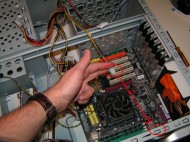 4-pin: Not even close! |
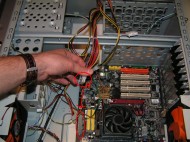 20-pin: Closer, but still not there. |
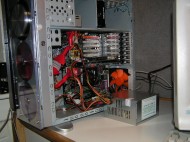 The only configuration that would reach. |
Luckily, the power supply story has a happy ending. Well, sort of. I installed the new power supply to find that the 20-pin connector fit (although just barely, and required having the wires stretched a little). Unfortunately, the 4-pin still didn’t make it. Looking at other motherboard models, I can see that my specific motherboard in fact was partly to blame for exacerbating the situation by having the plug for this wire in the absolutely farthest point on the motherboard, while other models have it closer. As a result, some wire splicing had to be done, at the expense of an old PSU’s wires. This did the job, but was definitely a little more work than was expected.
One feature of this case that I particularly have enjoyed is the space behind the left panel, into which you can throw all your unsightly wiring. Once I got the power supply to actually work from inside the case, I then took the time to neaten up the wiring so as to provide better airflow, and having this space to tuck and string wires about really was nice.
This case is definitely not meant to travel. As I have said, even without a single device attached, the case alone is remarkably heavy. As a result, if you have to transport it, you can be assured that little to no damage could occur to it, simply because it is so incredibly sturdy. Unfortunately, such travel will be bulky and awkward. Carrying this case through backyards or across several blocks in Hoboken was fairly difficult, even with it inside its box, with convenient handles and an improvised shoulder strap. In fact, my back still hurts from bringing it back up here to school, and so I have decided that for a good long amount of time, it will stay firmly planted in my room. If you must transport it, you can feel safe that no structural damage could come to it, provided you don’t run over it with a car or drop it off a cliff, but it won’t be an easy haul.
And of course, there are several front-mounted ports, for USB, firewire, or audio in/out. I had no problems with getting them to work, and as you can see, they are easily accessible whether the front panel is open or closed (There is a notch in the panel for the audio plugs).
|
$$ FIND THE BEST PRICES FOR THE ThermalRock Circle Case @ PRICEGRABBER $$ |
Appearance
Now that I’ve gone over the functionality of the case at length, how about its looks? At first, I was not too enamored by the colorful CDs displayed on the front panel, mainly because of my disappointment that it was purely meant for display, and had no real function, aside from providing storage for four CDs (which definitely is not a very functional storage). Sure, the provided red and purple disks were pretty nifty, but I just wasn’t feeling it. Of course, this was before I tried putting my own music CDs in there to see how it worked, and it was then that I really could see the beauty in it.
As for the window, I’ve come to really appreciate the craftsmanship and design of it. It’s large enough to see almost everything inside, yet not too big to make you worry about the structure. Plus, the little rivets around the outside of it definitely add a nice touch. As for the rest of the case, its very sturdiness makes it appealing.
The front panel is supposed to light up, but unfortunately, I cannot tell you what that looks like firsthand, since I cannot get it to work. The hard drive light works, and when it flashes, the light is visible almost throughout the entire front panel, so I can imagine that with all the LEDs working, it would be very cool indeed, but no matter how I wire it, no light comes from the panel LEDs or power LED monitor. I’ve noticed an odd inconsistency between the manual and the actual case though, in that the manual shows the power LED wire having three pins, with a ground, yet the wire provided with the case has only two pins. Obviously, other people have gotten the LEDs to work, so I know I probably just messed something up, or maybe one of the wires got damaged. If any damage occurred, though, it would’ve had to have occurred early, since from the very first time I powered it on, only the HDD LED worked.
Speaking of the manual, it provided much more amusement than useful knowledge. The very first article in it states, “It should follow the steps as below to easier install the side panel,” so I knew I was in for a treat. This manual features such useful bits of advice as, “Push the side panel from left to right,” and not only told you twice that you had to turn the key 90 degrees clockwise to lock it, but even showed a before and after picture of a key in both positions. With this attention to detail, I was genuinely confused when it then became as vague as possible about the tool-less installation, as I have noted earlier.
I should also describe the mechanism for placing CDs in the front panel. Installing them is very simple, but in trying to remove CDs I had a little trouble, since the CDs would become quite attached to their backing tray, and to remove them you have to really put a lot of pressure on the disk. I tried to just spin the CD a bit, rather than applying pressure, but by doing this, the sticky pads came off and remained stuck to the CD. So, don’t do this, because after I had to peel them off the CD, they didn’t function quite the same as before.
|
$$ FIND THE BEST PRICES FOR THE ThermalRock Circle Case @ PRICEGRABBER $$ |
CONCLUSION
In the end, it’s a very solid case, with a lot of useful features. I feel like I can rely on this case, and there’s so much room for modifications and additions that I don’t feel limited at all. I had some problems with the power supply wires, but that was mainly from at first trying to use a fairly low-end PSU, and also just because my motherboard did not appear to be designed for this kind of case. You will most likely want to check with your motherboard connections beforehand to see how they line up. There are a lot of tool-less features, but to me they seemed a bit flimsy, especially the connection for my video card. Personally, I have never been bothered by using just a couple more screws just to be sure it’s attached right, but I think I’m in a minority with that opinion. Plus, you won’t get much help from the manual, so you’d better either have a good idea what you’re doing, or know someone who does before attempting to install your stuff in it.
Price: $140 (US)
| Pros: |
|
|
| Cons: |
|
|
|
$$ FIND THE BEST PRICES FOR THE ThermalRock Circle Case @ PRICEGRABBER $$ |
 Bjorn3D.com Bjorn3d.com – Satisfying Your Daily Tech Cravings Since 1996
Bjorn3D.com Bjorn3d.com – Satisfying Your Daily Tech Cravings Since 1996
